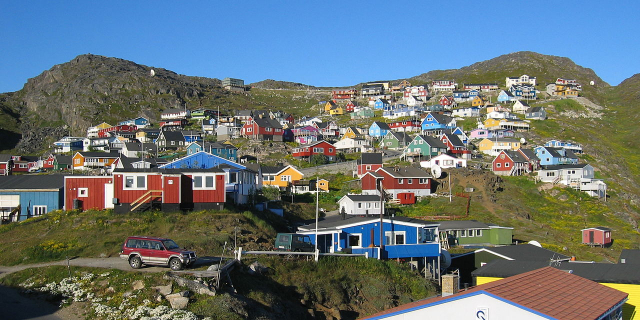Jakobshavn Glacier (Danish: Jakobshavn Isbræ), also known as Ilulissat Glacier (Greenlandic: Sermeq Kujalleq), is a large outlet glacier in West Greenland. It is located near the Greenlandic town of Ilulissat (colonial name in Danish: Jakobshavn) and ends at the sea in the Ilulissat Icefjord.
Jakobshavn Glacier drains 6.5% of the Greenland ice sheet and produces around 10% of all Greenland icebergs. Some 35 billion tonnes of icebergs calve off and pass out of the fjord every year. Icebergs breaking from the glacier are often so large (up to 1 km in height) that they are too tall to float down the fjord and lie stuck on the bottom of its shallower areas, sometimes for years, until they are broken up by the force of the glacier and icebergs further up the fjord.
Studied for over 250 years, the Jakobshavn Glacier has helped develop modern understanding of climate change and icec...Read more
Jakobshavn Glacier (Danish: Jakobshavn Isbræ), also known as Ilulissat Glacier (Greenlandic: Sermeq Kujalleq), is a large outlet glacier in West Greenland. It is located near the Greenlandic town of Ilulissat (colonial name in Danish: Jakobshavn) and ends at the sea in the Ilulissat Icefjord.
Jakobshavn Glacier drains 6.5% of the Greenland ice sheet and produces around 10% of all Greenland icebergs. Some 35 billion tonnes of icebergs calve off and pass out of the fjord every year. Icebergs breaking from the glacier are often so large (up to 1 km in height) that they are too tall to float down the fjord and lie stuck on the bottom of its shallower areas, sometimes for years, until they are broken up by the force of the glacier and icebergs further up the fjord.
Studied for over 250 years, the Jakobshavn Glacier has helped develop modern understanding of climate change and icecap glaciology. Jakobshavn is one of the fastest-declining glaciers in the world, and icebergs calving from Jakobshavn were responsible for 4 percent of the increase in global sea level in the 20th century. Ilulissat Icefjord (Greenlandic: Ilulissat Kangerlua) was declared a UNESCO World Heritage Site in 2004, in part because of the importance of the Jakobshavn Glacier in contributing to the current scientific understanding of climate change.













Add new comment